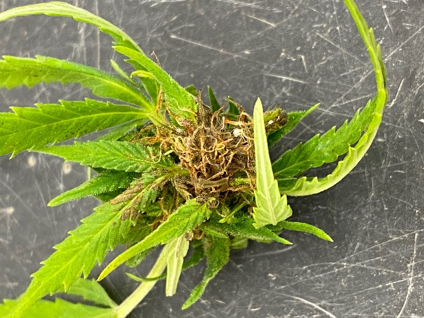According to the Alabama Extension Commercial Horticulture Facebook page, recent samples of hemp seedlings sent to the Auburn University Plant Diagnostic Lab yielded discouraging results.

The seedlings and clones were infected with gray mold or Botrytis cinerea. The fungus favors a cloudy and cool environment. Hemp that is produced in greenhouses in conditions that are high in humidity are at risk to be infected by the fungus.
Gray mold develops primarily in flower buds and plant parts that are tightly-packed. The fungus is commonly found in and between buds where microclimates are humid and air flow is restricted. Bud blight is the most common symptom of gray mold observed.
Botrytis cinerea is dependent on a wound or opening in the plant tissue for infection to occur.
Proper sanitation is essential in controlling gray mold. It is especially important to start with clean plant materials.
Scouting on a regular basis will help identify potential problem areas in the greenhouse early before the disease is firmly established. If symptoms of gray mold are observed, producers need to prune and discard any tissue that is dead, dying or diseased.
Use adequate plant spacing to ensure air is properly circulated. Maintain humidity levels near 50%. Avoid irrigating the leaves and canopy, and do not over-fertilize, especially with nitrogen. Monitor and manage insects that can create wounds for the fungus to enter the plant.
A list of fungicides registered in Alabama for use on hemp can be found at: https://www.aces.edu/…/hemp-pest-management-in-alabama/.
If you need to submit a sample for disease diagnosis, please refer to: https://offices.aces.edu/plantlabauburn/.









